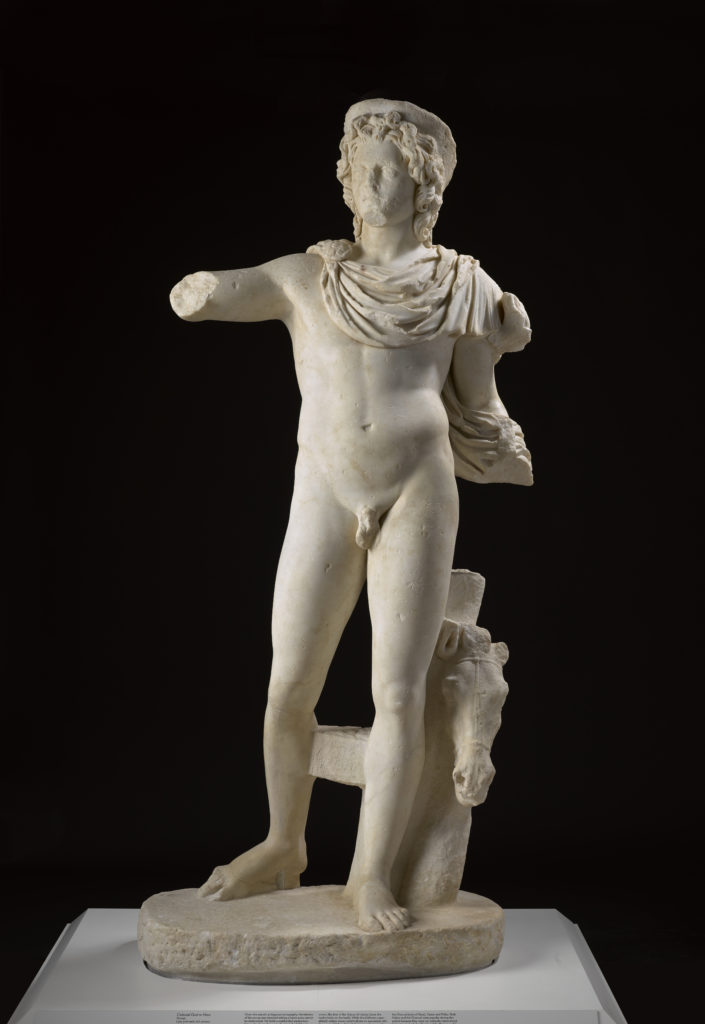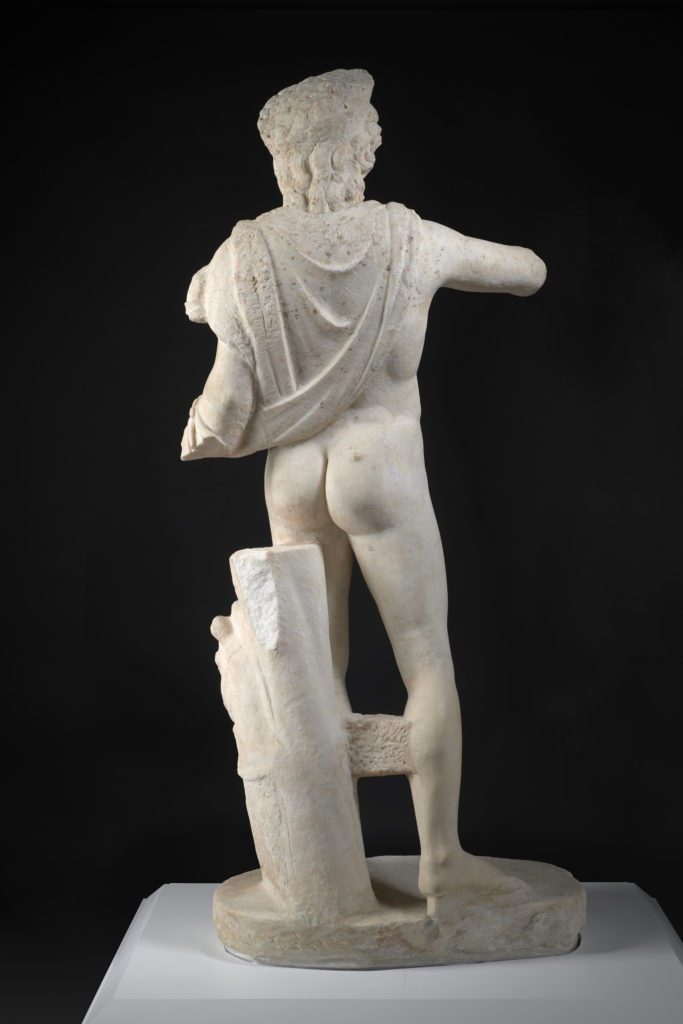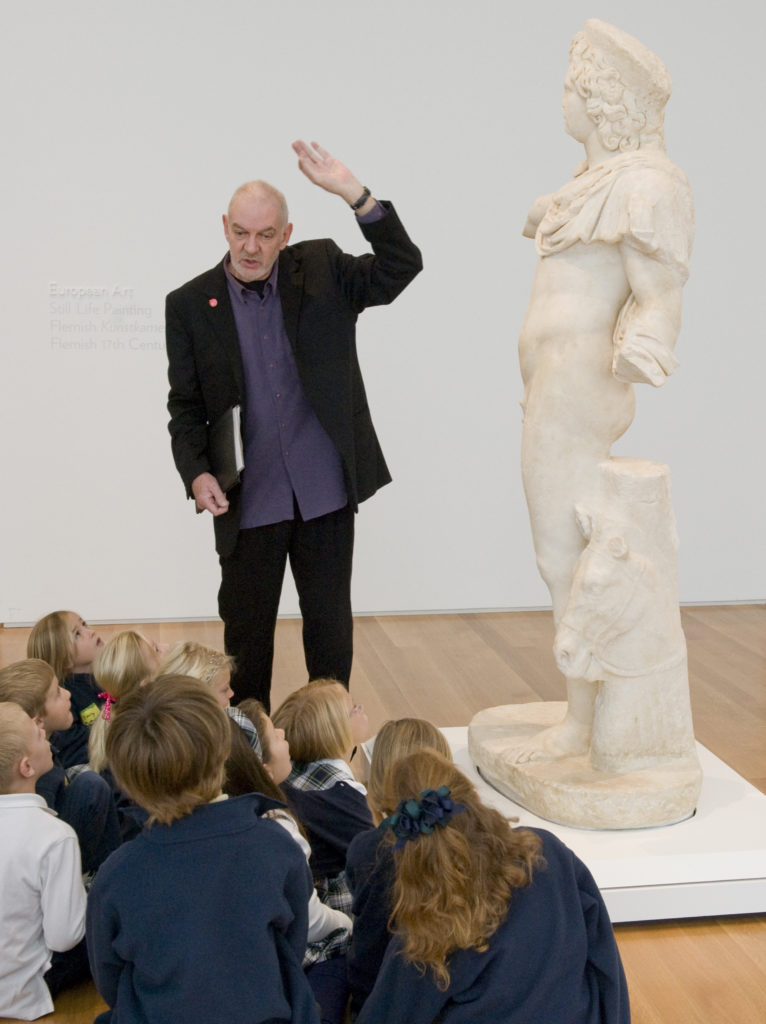Statue of Helios (work of art)
Artwork Info
Key Ideas
- This is a marble statue of the celestial god Helios (which means “sun” in Greek). According to Greek mythology, Helios moved the sun across the sky each day.
- The statue depicts a young male figure wearing a short chlamys (clam-miss), or rectangular cloak that is worn over the left shoulder and fastened at the right side. He also wears a sun crown, which has lost its 12 bronze rays, and he is supported by the figure of a horse’s head at his feet. Even though his arms are missing, the traces of a flame on his upper left arm indicate that he was holding a torch in his left hand. All of these details helped archaeologists and art historians to identify this figure as the Greek sun god Helios.
- Classical sculptures of human figures often have broken or missing arms because the arms are so fragile.
- Alexander the Great, the famous Macedonian king and general, was sometimes portrayed in art as the sun god Helios. One of the titles given to Alexander the Great was “Helios, the sun king.”
Learn More
In Greek mythology the celestial god Helios was responsible for the movement of the sun across the sky each day, from the east to the west, as he rode across the heavens in his golden, horse-drawn chariot. He is commonly depicted as a sun-crowned young man who drives a chariot led by four winged horses across the sky.
This statue depicts Helios wearing the remnants of a crown that originally had 12 bronze rays framing his face. Traces of a flame on his left upper arm suggest that he once held a torch in his left hand. Additional evidence suggests that he was pointing out his route across the sky with his right hand. His horse-drawn chariot is represented by the figure of a horse’s head beside his left foot.
In the fourth century, Alexander the Great adopted Helios as his favorite god, likely due to the fact that he had conquered Mesopotamia, Parthia, Bactria, and northwest India (known as the “lands of the rising sun”). He favored Helios as a symbol of power and military success. Alexander the Great was sometimes portrayed In art (especially marble sculptures) as Helios. This statue of Helios, for example, features Alexander the Great’s distinctive hairstyle.
tags: symbolism, hero, social studies
Additional Resources
Resources for Teachers:
- Read an article about the portrayal of Helios in Greek mythology and art.
- Explore a website that offers detailed information about the marble-carving process and tools in antiquity.
- Watch a video that explores the ways ancient kings and emperors skillfully manipulated art and religious figures as a form of political propaganda.
Resources for Students:
- Learn interesting facts about Helios.
- View a sculpture of Alexander the Great as Helios.
- Watch a video about the Greek myth of Helios and his son Phaethon.




